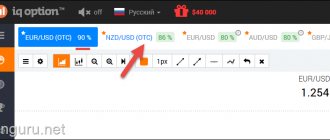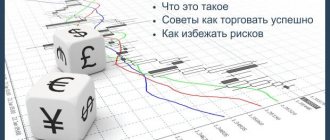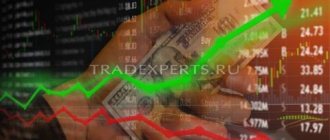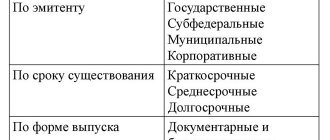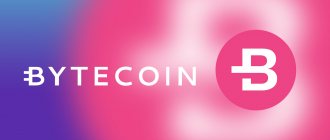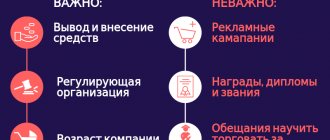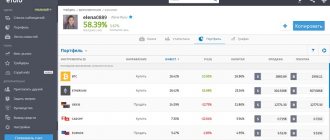Every Forex broker must have a liquidity provider. If there is none or the broker refuses to provide information about the liquidity provider, then this is a reason to doubt the reliability of the company. So today we’ll talk about who are Forex liquidity providers, why are they needed and why is their activity so important for the average trader.
Quick navigation
Liquidity in Forex
Liquidity in Forex represents the desire of Forex market participants to make transactions to buy and sell financial instruments at a given point in time. And the greater the number of players in the market aimed at carrying out transactions, the higher the supply and demand and, accordingly, the higher the liquidity. The Forex market is considered one of the most liquid in the world, because... its daily turnover amounts to hundreds of millions of dollars. It is liquidity that helps us close our positions at any time at the current market price and immediately receive real money into our account.
Who provides liquidity in the Forex market?
The term "liquidity provider" is typically used to refer to a market maker, but several other types of foreign exchange market participants provide liquidity to the market by increasing the volume of transactions.
These types include central banks, major commercial and investment banks, multinational corporations, hedge funds, foreign investment managers, retail forex brokers, retail traders and high net worth individuals. Currency futures market participants, hedgers, high-frequency traders and speculators also contribute to liquidity.
The foreign exchange market also has many active participants within each of the above types. The high degree of forex liquidity observed in the market is a direct result of the participation of many companies, organizations, individuals and governments in this international market.
Forex liquidity providers
Liquidity providers are large financial organizations whose transaction turnover has a significant impact on the formation of quotes on the foreign exchange market and provide up-to-date information on quotes for other stock market participants.
In simple terms, liquidity providers are banks that have sufficient capital to enter directly into the foreign exchange market, where access is closed to the average trader and most brokers. They generate and transmit quotes to liquidity aggregators in real time. This information becomes available to the trader on the monitor screen in the trading platform. Based on data from the trading terminal, the trader conducts a technical analysis of the Forex market and makes a decision on making a transaction.
Recommended reading: Trader Rules
Liquidity providers include:
- Large banks with huge capitals,
- Smaller banks (intermediaries) with access to the foreign exchange market
- Famous hedge funds.
The top providers of quotes are such well-known financial titans as:
- Bank JP Morgan,
- Bank of America
- Deutsche Welle Bank,
- Citibank and others below.
Due to the colossal number of participants who do not have impressive amounts to directly enter the foreign exchange markets, liquidity aggregators have appeared.
Liquidity aggregators
Liquidity aggregators are organizations smaller than giant banks that act as intermediaries between liquidity providers and other stock market participants (Forex brokers, small banks, funds, etc.).
Their main task can be called collecting and grouping quotes coming from various sources and transmitting orders to liquidity providers. The top liquidity aggregators include: Currenex, Quotix, Lmax, Integral, Prime XM and others.
The activities of liquidity providers and aggregators are essential for successful trading. After all, they have a direct impact on the results of an open order, since they ensure the reliability of quotes and the speed of execution of transactions.
Most Forex brokers work through aggregators. This has its advantages:
- Ability to compare quotes and offer clients the best prices,
- Reducing the spread size,
- In case of force majeure, there are always backup options.
Quote aggregators have 2 algorithms for processing orders from clients:
- ECN – stands for Electronic Communication Network and literally translates as electronic communication network,
- MTF – stands for Multilateral Trading Facility, which means multilateral trading communication network.
Aggregators that use ECN algorithms (including Currenex) process customer requests as follows.
Regarding limit orders:
- The broker forms a market depth from liquidity providers and accepted orders for execution,
- Matching orders are automatically executed,
- If there are no matches, a request is made to liquidity providers with the most similar prices and volumes,
- If a positive response is received, the application is executed,
- If the answer is negative, the possibility of confirmation from other suppliers is requested.
- Having received a refusal from all of them, a new quote is sent to the client.
Recommended reading: Flat Forex
As a result, slippage is possible and the transaction can be executed at a different price.
The ECN order execution method is most often found among brokers.
The MTF algorithm is less common. It has a number of features compared to ECN:
- A limit trade will open automatically if there is a counter order, which eliminates slippage,
- Higher spread
- Guaranteed output of a transaction to the interbank market and receipt of a report on each transaction.
LMAX and CFH Clearing cooperate according to this principle.
How it works
Based on the operating principle, liquidity aggregators are divided into 2 types: ECN (Electronic Communication Network) and MTF (Multilateral Trading Facility).
I also recommend reading:
The Central Bank of the Russian Federation canceled the licenses of the Forex club, Teletrade and Alpari
Why Alpari, Forex Club and Teletrade lost their license from the Central Bank
ECN aggregators work as follows:
- The order book is formed from quotes from liquidity providers and client pending orders.
- If there are suitable orders from different clients inside the order book, their orders overlap.
- If there are no such orders, the orders remain in the order book.
- Liquidity providers with the closest order to the next order are asked to confirm the transaction.
- If confirmation is received, the order is executed.
- Otherwise, the order is redirected to the next supplier.
- Finally, if none of the liquidity providers provides a suitable price, the client receives a new quote.
This mechanism of working in a dynamic market can lead to slippage and delays in order execution, which makes trading on news difficult. Most aggregators operate on the ECN principle. The largest ECN aggregator at the moment is Currenex.
The difference between the MTF aggregator is that client orders are executed automatically if there is a corresponding price from the liquidity provider. Therefore, any slippage is absolutely excluded. The disadvantage of this algorithm is usually a wider spread. The largest MTF aggregators are LMAX and CFH Clearing.
The merging of client limit orders occurs using the FIX protocol (Financial Information Exchange - exchange of financial information). It allows two types of order execution: FOK and IOC. Execution of the FOK (Fill Or Kill) type means the complete execution of an order at a given price if an offer suitable in price and volume is received from the liquidity provider. No other order execution option is allowed here. IOC (Immediate Or Cancel) allows both full and partial execution of an order at a given price, after which the remaining part of the order can be executed at a different price. Sometimes liquidity aggregators are also called providers, since small brokers work through them. Such brokers are called STP (Straight Through Processing) brokers.
Liquidity providers of famous brokers
Forex broker Amarkets has liquidity providers: Credit Suisse, UBS, Morgan Stanley, Deutsche Bank, X open hub.
FxOpen works with JPMorgan, Bank of America, HOTSPOT INST, Deutsche Bank AG and other large banks.
Thus, Amarkets and FxOpen cooperate directly with the largest suppliers.
Brokers Roboforex, Forex4you and Alpari receive quotes from reliable liquidity aggregators Currenex and Integral. At the same time, Roboforex said that it tries to periodically change key partners to provide better conditions for clients and keeps several reserve ones in reserve in case of possible operational failures. In this regard, this information is not presented on the website.
IceFx cooperates with Advanced markets, and Weltrade with the Cypriot company TOP-FX and the British broker LMAX.
NordFX takes data on exchange rates from ECN and Currinex.
But the technical support of the broker Fibo Group refused to disclose information regarding the sources of origin of the quotes. Earlier on the official forum they referred to the UK-registered company Sucden Financial Limited. Frankly, this information made me think and once again carefully study the company’s activities.
Similarly, Teletrade did not disclose quote suppliers, citing a large British company. The broker had not inspired confidence before, so he was not surprised by the refusal.
Liquidity providers of Russian forex brokers
Among Russian licensed brokers, quotes are supplied by:
- in relation to the broker Alfa Forex LLC - Alfa Bank,
- for VTB Forex LLC - VTB Bank, respectively,
- PSB-Forex LLC is a subsidiary of Promsvyazbank PJSC,
- FINAM FOREX LLC is part of the FINAM investment holding and currently cooperates with Just2Trade, which works directly with Currenex.
I recommend reading: What you need to know about Forex?
Russian banks, in turn, work in the international market with the largest European and American banks providing liquidity (Commerzbank, Deutsche Bank, JP Morgan Chase, etc.).
You can find out the liquidity providers of a particular broker by studying the information on the official website or by contacting technical support. Every conscientious broker will provide this information without any problems, because... It doesn't represent any special secrecy.
This data can be useful in case of discrepancies. For example, when a trader, after a significant loss of money, doubted the reliability of the quotes provided by the broker. In this case, the charts of different brokers for the same period of time are often compared. If significant discrepancies are identified, you can contact the liquidity provider directly with an explanation of the quotes and compare them with the broker’s data. This will allow you to understand whether the broker really brings all transactions to the market or “adds a little touch” with a profit for himself.
On the other hand, this strategy can only partially confirm or deny the fact of fraud on the part of the broker, since quotes at the same point in time can be provided by different suppliers.
But if they refuse to indicate to you the companies providing quotes, this is a reason to question the broker’s honesty.
However, the presence of large and trusted suppliers does not always indicate the reliability of the broker. Let’s remember the failed broker PrivateFX, whose quotes were provided by fairly large and trusted companies. Among them are Interactive Brokers, which works directly with the largest banks, and the European LMAX. But this did not protect the participants
